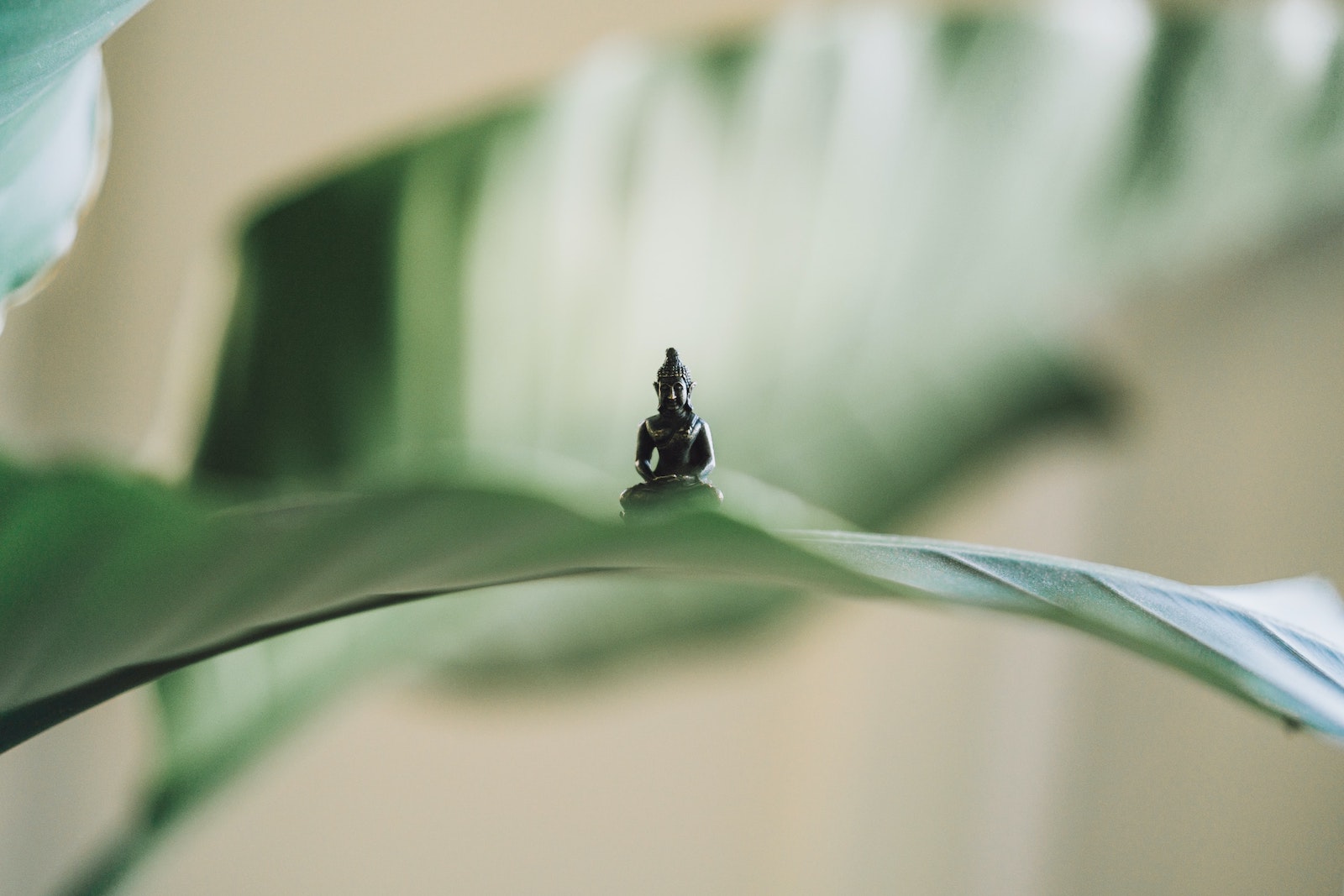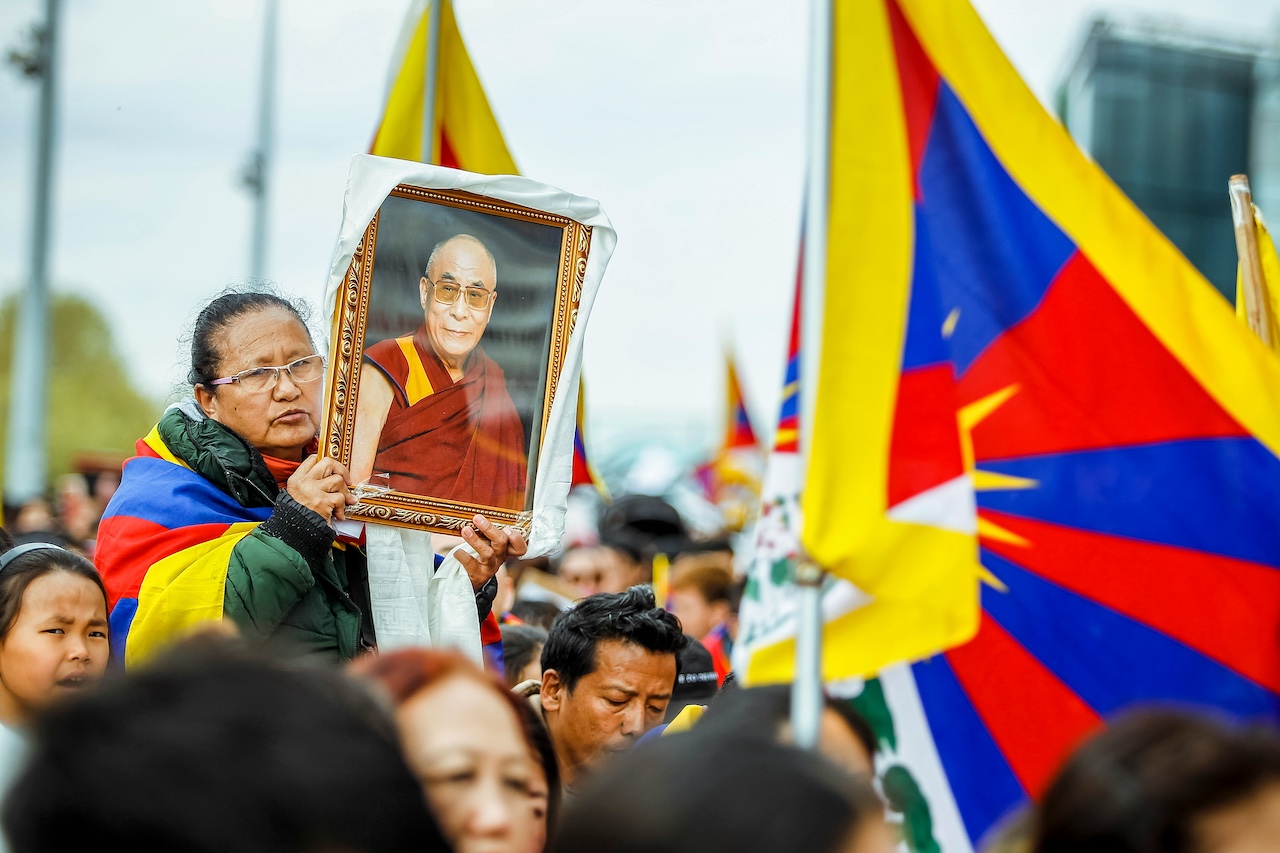What Is Yoga? A Comprehensive Guide To Yoga’s Origins, Styles & Benefits
The post What Is Yoga? A Comprehensive Guide To Yoga’s Origins, Styles & Benefits appeared first on The Yoga Nomads.

Yoga is everywhere: In gyms, health clubs, schools, hotels, and even prisons!
But while you’re likely very aware of the word yoga, do you know how to answer the question, “What is yoga?”
If your answer is something along the lines of “stretching,” “breathing,” or “relaxation,” this guide is for you.
Although yoga encompasses all of those things, it is so much more. Yoga is neither a type of exercise nor a mindfulness technique. Yoga philosophy is a journey, a path of yogic traditions, a way of life following certain steps…
Whether you’re new to the practice or have been dabbling in it for a while, let this guide allure you into the ancient and magical world of yoga.
You’ll discover the meaning and origins of classical yoga, how the practice has evolved, and how it can benefit you today. And be sure to read until the end as I’m sharing my top tips (as a qualified yoga instructor) for getting started!
Defining Yoga: Insights from Classical Texts
While today you can find yoga classes worldwide, the practice has deep roots in ancient Indian philosophy. Studying the classical Texts from centuries ago can teach us what yoga is all about and why we should practice it.
Yoga According to The Bhagavad Gita
The Bhagavad Gita is a 700-verse Hindu scripture written between the 5th Century BCE and the 2nd Century BCE.
The Bhagavad Gita, a crucial text in Hinduism, describes yoga as “the journey of the self, through the self, to the self.” This implies that yoga is more of a spiritual path towards self-realization, akin to Samkhya and Buddhism practices than the physical practice we commonly know today.
Patanjali’s Yoga Sutras
The most well-known yogic text is Patanjali’s Yoga Sutras, written in the 2nd Century BCE.
In the yoga sutras, Patanjali describes yoga as “the cessation of movements in the conscious mind,” suggesting that yoga is about calming your mind and achieving inner peace.
Patanjali summarized his teachings into eight limbs of yoga, which serve as steps to reach the goal of yoga. These include:
Yamas (ethical standards) Niyamas (self-discipline) Asana (posture) Pranayama (breath control) Pratyahara (withdrawal of senses) Dharana (concentration) Dhyana (meditation) Samadhi (bliss)Yoga and The Upanishads
The ancient Hindu texts known as the Upanishads portray yoga as a means to attain spiritual enlightenment and liberation from the cycle of birth and death.
While The Upanishads do not talk about yoga directly, they discuss many aspects of the ancient practice, including:
The importance of controlling our minds and senses Meditation and contemplation as tools to attain self-realization The union of our soul with universal consciousness relates to the Sanskrit word yoga, which means “to yoke.”The Evolution of Yoga

As the earliest scriptures mentioning yoga were from the Vedic period, it is believed that yoga began over 5,000 years ago.
Indian sage Patanjali, who wrote the ‘Yoga Sutras,’ was one of the first yogis to share the meaning of yoga, introducing the Ashtanga eight-limbed path.
But it’s not just Hinduism that yoga has roots in; it was also heavily influenced by Buddhism and Jainism. Many aspects of yoga philosophy are apparent in these religions. Moreover, Buddhists have practiced meditation for spiritual development since the 6th century BCE.
During the classical era, we discovered more about yoga through the emergence of Hatha Yoga. Hatha focuses on physical postures (asanas) to increase strength and flexibility, becoming a stepping stone for modern-day yoga styles.
If you’re interested, here’s a more in-depth article on the history and evolution of yoga.
Yoga in the 21st Century
Yoga is now just as popular in the West as in the East. In the United States alone, yoga is a $9 billion industry!
How?
Because it is not just about yoga classes; Yoga gear, yoga clothes, and yoga retreats are all the range, and with so many modern yoga styles, there is now something for everyone…
Modern Yoga: Different Yoga Styles

So, what are the most popular yoga styles nowadays? What is the difference between them? And how do you know which one is for you?
Well, I always recommend my students try many different classes because you will likely find one style you instantly fall in love with – I sure did!
Let’s briefly look at each style so you know what to expect when you walk into class and step onto your yoga mat for the first time.
Hatha yoga
Hatha yoga is a well-rounded, balanced style that combines postures (asanas) and breathing techniques (pranayama). You hold the postures for 5 to 10 breaths, focusing on finding the correct alignment and cultivating a balance of effort and ease in every pose.
Ashtanga yoga
Ashtanga is more dynamic and physically demanding than Hatha yoga as it involves synchronizing the breath with a progressive series of postures. Ashtanga yoga follows a set sequence, so you do the same poses in the same order in each class (more or less).
Vinyasa yoga
Vinyasa is a modern version of Ashtanga and Hatha that includes many of the same poses but links them together into a dynamic, smooth, dance-like flow. You learn to move from pose to pose, connecting each one to each breath. It is also one of the most creative yoga methods, so expect every vinyasa class to be unique.
Kundalini yoga
Kundalini yoga combines spiritual and physical practices, incorporating movement, dynamic breathing techniques, meditation, and chanting of mantras. The traditional purpose of Kundalini yoga is to activate dormant energy in the base of the spine, facilitating a spiritual awakening.
Iyengar yoga
Iyengar yoga involves longer holds and fewer poses than Hatha. The main focus is alignment, so it is a fab style for beginners looking to understand the most common yoga poses.
Yin yoga
Yin yoga involves long, deep floor stretches that target the deep connective tissues and activate the energy in the meridian channels. You typically hold each stretch for 3-5 minutes, using meditation practice and breathing techniques to remain focused and present.
Restorative yoga
Like yin, restorative yoga focuses only on floor poses and involves long holds. However, this style, influenced by yoga sutras, uses many props to support the body and promote healing and restoration. This therapeutic method helps relieve physical symptoms of various health conditions and ease depression, anxiety, and stress.
Other Westernised yoga styles
Westerners have certainly added their own twist to yoga, and many die-hard yoga practitioners would say they have removed the true essence of the practice.
As a yoga teacher of over six years, I somewhat agree. Many modern yoga practices lack the traditions and philosophy of classical yoga, which is why it has become much more about the physical benefits than the spiritual aspects.
Hot yoga is one such adaptation. Performed in heated rooms at temperatures up to 40°C, hot yoga is adored by many for its benefits around flexibility, weight loss, and detoxification.
Power yoga is a fast-paced “yoga workout” emphasizing strength and flexibility. This popular style taught in gyms rarely features any meditation or breathing techniques.
Still, one positive of this Western influence is that the practice is now accessible to more people. Sure, most people will not experience liberation from practicing modern styles like hot yoga, but they will still gain many benefits, like stress reduction and increased mindfulness.
Talking about the benefits of yoga, let’s explore this topic deeper…
Benefits of Practicing Yoga

As yoga is about bringing the mind, body, and soul into union, you can expect to gain a wide range of holistic benefits from a regular yoga practice.
Physical Health
Regular yoga practice does wonders for our bodies – from boosting flexibility and building strength to easing low back pain and keeping many health conditions at bay.
Improved flexibility – Yoga poses involve lengthening and stretching the muscles (and in yin yoga, the tendons and ligaments). According to clinical studies, 10 weeks of regular yoga practice can bring you noticeable improvements in flexibility while enhancing overall mobility and reducing the risk of injuries. Enhanced strength – Many types of yoga practices work on strengthening the muscles as much as stretching them. Common poses like plank pose, downward facing dog, and advanced poses like ‘crow pose‘ are among the best for building body strength. Improved posture & balance – Many yoga poses help to open the chest and shoulders and promote a straight spine, which improves posture. Likewise, poses that require core stability, like warrior 3 and boat pose, improve balance. Chronic back pain reduction – Several studies demonstrate that yoga effectively reduces chronic low back pain and sciatica by easing pain intensity, strengthening the back muscles, and improving spinal mobility.Mental Health

Here’s why yoga is not just physical activity – because it works magic on the mind in a way that running, lifting weights, or even dancing can! Honestly, there is no greater feeling of bliss than laying in Savasana (corpse pose), totally relaxed after an hour of deep breathing and juicy stretching!
So, just how does yoga make us feel so good?
Anxiety and stress reduction is one of the key benefits. Each asana (pose) is combined with a breathing technique if taught properly. This not only reduces fatigue and helps focus the mind, but it also regulates the nervous system, which in turn reduces stress hormones like cortisol. Mindfulness is another biggie. Beginning your asana practice with meditation enhances your body awareness and helps you stay present and focused on the mat. Meanwhile, ending your session with contemplation allows you to carry over a sense of peace and gratitude into your day so you can stay calm in the chaos of daily life! Enhanced cognitive functioning is another huge modern-day benefit. Yoga is scientifically proven to boost brain health, reduce neurodegenerative decline, and improve concentration and memory retention.Spiritual Growth
The main benefit of classical yoga was spiritual growth. While you may not seek enlightenment, modern yoga practices are still excellent at gaining self-awareness and cultivating a place of inner peace that you can visit whenever the external stressors get too much.
Yogic practices can also facilitate a spiritual journey, allowing you to step into or delve deeper into the world of spirituality. This is because yoga is linked to other spiritual practices like meditation, mantra chanting, and energy healing.
Even if you don’t come to yoga for spiritual growth, you will still find that you become more aware of yourself (your thoughts, feelings, and reactions to different situations) through regular practice. This increased self-awareness then seeps into all areas of your life, helping you become more compassionate to others, adopt healthier habits, and make better choices.
How To Start A Yoga Practice

So now you have a deeper understanding of “what is yoga?” and what you can gain from it, you’re likely considering booking your first class. If so, here are my top tips for starting your yoga journey.
Choosing The Style For You
Your “why” for practicing yoga will determine the best style for you:
Hatha yoga – Best for learning the basics. Restorative Yoga: Best for relaxation and stress relief. Yin Yoga: Best for increasing flexibility. Ashtanga Yoga: Best for building strength or for those seeking structure. Vinyasa Yoga: Best for those seeking flow, creativity, and expression.Getting Prepared
Luckily, you don’t need much to begin a yoga practice; a yoga mat is sufficient for many styles. However, there are some super helpful and affordable props that I recommend having on hand when learning the poses.
In particular, yoga blocks and straps will help keep your joints safe and prevent overstretching or injury. Meanwhile, bolsters and blankets provide extra support and comfort in restorative yoga.
Check out our in-depth yoga prop guide with product recommendations for all budgets and yoga levels. And discover our top 6 yoga mats for beginners with expert tips on finding your perfect mat!
What about clothing?
Opt for comfortable clothing with a great range of motion. Breathable sportswear is also best for dynamic yoga styles like Ashtanga and Vinyasa. Check out our complete guide to finding comfy yoga clothes for more ideas.
Finding “Your Teacher”

Finding a qualified yoga teacher is not difficult – In 2020, Yoga Alliance reported 100,000 Registered Yoga Teachers (RYT), which is expected to be much higher now!
However, this doesn’t mean that every yoga teacher will fit you well. When I first started practicing yoga, I tried many different instructors. Many were high-quality teachers, but there was only a handful I truly resonated with, and the same will probably be true for you.
So, when attending trial classes and trying our new studios, I recommend looking for the following:
Teachers who give clear cues and guidance on the poses and breathing techniques. Instructors who prioritize safety teach you to listen to your body and provide plenty of modifications. Yoga studios that care about your journey want to see your progress and check in with you regularly.Learning The Poses
In your first yoga class, you’ll discover many different poses, which can be a little overwhelming. So, I recommend learning some of the most common ones beforehand to know what to expect. This guide to the most common Hatha yoga poses is a fab resource to start with.
Then, check out our full yoga poses section, with how-to guides on individual poses, common sequences, and articles on the best poses for all body parts.
Here are some of the most common yoga poses you will come across in a beginner-level class:
Downward facing dog Child’s pose Cat-cow pose Mountain pose Tree pose Sun salutations Warrior poses Corpse poseWrapping Up: What is Yoga?
By exploring yoga’s deep historical roots, we can understand the true meaning of classical yoga – self-realization. Then, looking at how yoga has evolved over the years, we can see the wide range of mental, physical, and spiritual benefits this practice provides in the 21st century.
So whatever draws you to yoga, remember it’s not only about mastering physical poses. Yoga is more of a work-in than a workout, a tool for cultivating mindfulness, inner peace, and transformation.
FAQ 1: What are the origins of yoga?
Yoga started around 5,000 years ago in ancient India as a spiritual practice focused on meditation, peace of mind, and harmony with nature.
FAQ 2: How does yoga impact our well-being?
Yoga enhances our well-being by improving physical strength, flexibility, and balance while relieving stress and promoting mental clarity.
FAQ 3: How often should I practice yoga?
For beginners, it’s recommended to start with two sessions per week. As you get more comfortable, you can increase the frequency according to your comfort level.
FAQ 4: Do I need any special equipment for yoga?
For most yoga styles, the only essential item is a good-quality yoga mat. However, props like blocks or straps can offer support and assistance with certain poses.
FAQ 5: Is yoga suitable for everyone?
Yes! Yoga can be adapted for people of all ages and fitness levels. Always listen to your body and modify poses as necessary.

 Astrong
Astrong 































